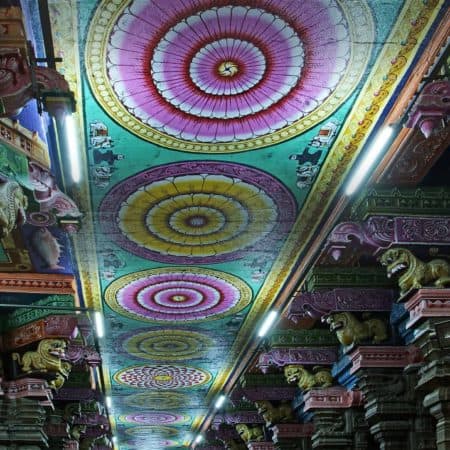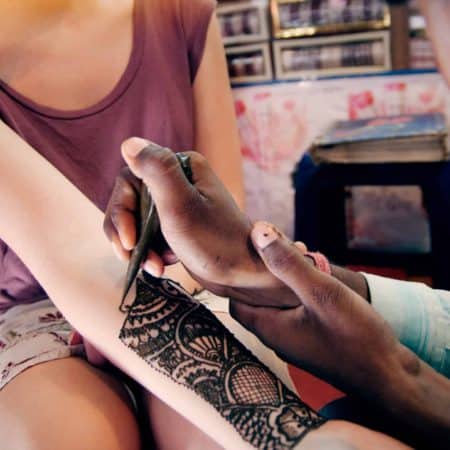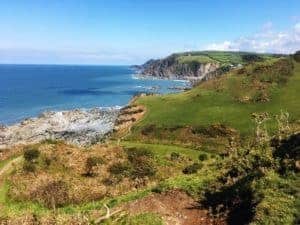Tucked away in the north west corner of India, Rajasthan, Land of the Kings boasts more history in its 132,000 square miles than the whole rest of India put together. Ancient forts and opulent palaces dominate the skylines, serving as mementoes of the state’s turbulent past juxtaposed with the noise, chaos, food, festivals and music that make up the Rajasthan of today.
It is no surprise that Rajasthan, along with Uttar Pradesh, home of the Taj Mahal and Delhi, the country’s capital, is India’s most popular tourist destination. It ticks every box for travelers from those craving luxurious escapes, to creative arts buffs, history enthusiasts, romantics, foodies, wild animal lovers, thrill junkies and the most intrepid, intent on awakening their inner nomad.
Wise is the man (and woman) who plans ahead, and never is this old adage more apt than when it comes to sketching out your to-do list for India’s largest state. Accounting for one-tenth of the nation’s land mass, the whole western half of Rajasthan is taken up by the shifting sands and fertile plains of the Thar Desert. This means that if time is of the essence, you need to make sure you do not commit two-thirds of your trip to simply making your way from A to B.
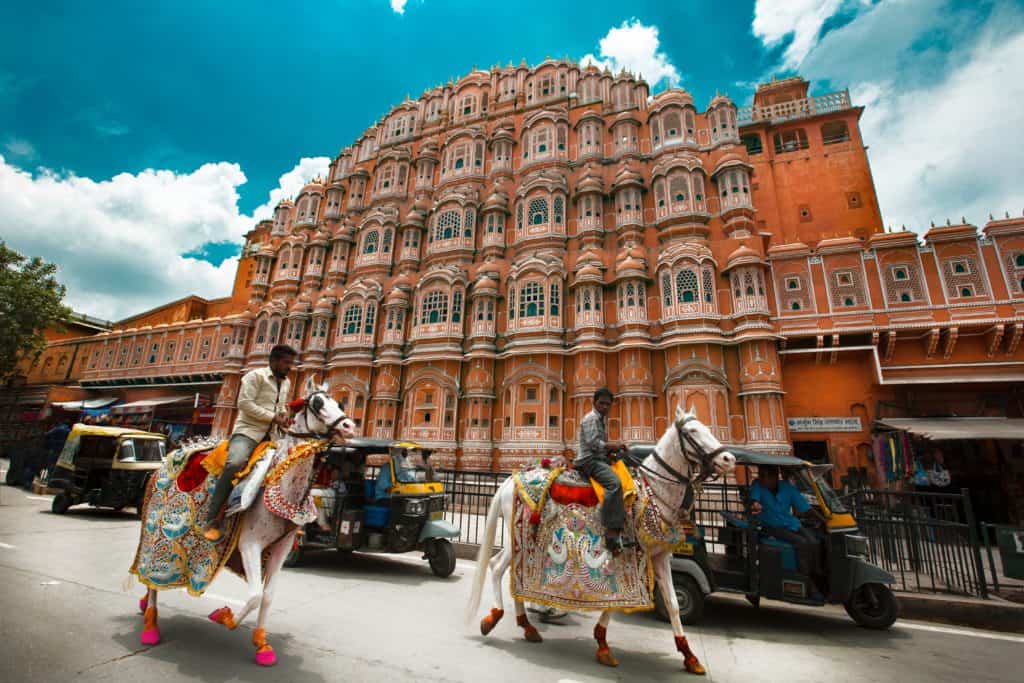
Jaipur – The Pink City
For most travelers, there are three main entry points into Rajasthan. The first, by way of its largest city, Jaipur aka The Pink City, which has an international airport and countrywide rail connections. Even though the solitude of a desert safari aboard the hump of a camel is calling, it is worth spending a couple of days here, as it is the state capital and home to some of Rajasthan’s most famous landmarks.
Founded in 1727 by the Hindu ruler and astronomer, Maharaja Jai Singh, Jaipur was India’s first planned city, built on a grid structure along Vedic astrological principles. Nowadays, it is clean with good infrastructure. Designated UNESCO world heritage status in July 2019, the city consists of colonnades and chaupars or public squares and wide parade-friendly boulevards. Maharaja Jai Singh’s Royal Palace lies at the heart of the city, intricately adorned with jewel flecked walls, hidden harems, galleries, and a striking northeast gate festooned with peacock motifs.
On the edge of the palace is Jaipur’s most celebrated edifice, the Hawa Mahal (Wind Palace) a red and pink sandstone pyramid structure, built in 1799, made up of 953 windows spread over five floors, built for the purpose of allowing the women of the city, observing the rules of purdah, to see out onto the street, without being observed from the outside.
Shopping Central: You will inevitably find yourself steered in the direction of the famous old city bazaars. Choose Johari Bazaar if looking to purchase either traditional Jaipuri bhandani tie dye saris and suits, or jewels. Jewellery is a specialism the city excels in.
As the largest stone cutting centre in the world, Jaipur has an obsession with jewellery that dates back to the reign of Maharajah Jai Singh and his infatuation with precious gems.
To live like a local, why not catch a Bollywood movie at the eccentric, art deco Raj Mandir cinema, with its meringue shaped, bejeweled auditorium. Book early if you intend to watch the latest Hindi film, and be prepared to share the 1100-seater with a boisterous crowd.

Jodhpur
Six hours train ride from Jaipur, also well connected by air and rail, is Rajasthan’s second largest city, Jodhpur. And, before you ask, yes, this is where the fetching polo pants of the same name originate. It is aka Sun City, due to the unrelenting, drought inducing sun, and Blue City, named after the pastel hues of the houses surrounding the fort of Mehrangarh. This imposing fort is the reason most travelers visit. It sits majestically four hundred feet above the city on a perpendicular cliff, chiseled from the red sandstone in which it stands and is one of the India’s largest and best-preserved UNESCO protected sites.
Movie buffs will recognize it from the major role it played in Christopher Nolan’s, The Dark Knight Rises. If you have a head for heights, why not take a zip line with Flying Fox, to get the best views over the battlements and surrounding lake.
Udaipur
Udaipur, with its labyrinth of lakes, marble temples and whitewashed homes, located 180 miles and two hours train ride, south of Jodhpur, was tagged in 1829 as, ‘the most romantic spot on the continent of India,’ by Colonel James Todd of the East India Company.
Two-hundred years on and the same can be said of this fairytale, ‘Venice of the East’.
Despite the making of 12 subsequent Bond movies, the locals still speak excitedly about when Octopussy was filmed here, with the whole city carrying an air of suave sophistication synonymous with 007.
The Palace Complex still inhabited by the Mewar royal family is open to the public, offering tours around its crystal gallery and vintage car collection, while, the annual World Music Festival held every February on the banks of the Fateh Sagar Lake, draws both artists and crowds from around the globe. To see Udaipur at its best, however, head to Gangaur Gat, steps leading down to the river, and enjoy a cup of chai as the sun sets over Lake Pichola.
It is impossible to visit Rajasthan and not have some form of interaction with a camel. Top camel activity for all animal lovers has to be a camel safari, camping out and sleeping under the desert stars. Don’t let anyone tell you this is too touristy. OK, it might be, but it is an experience not to be missed. Jaisalmer, aka the (very magical) Golden City, in the heart of the Thar desert, 170 miles west of Jodhpur, is the place to go for the best scenery, dunes, and desert. It can get quite crowded especially if you are only going for a short trip so, you would be best advised to work with a tour guide who offers you ‘off the beaten track’ options. Bear in mind, opt for too cheap a tour and you are setting yourself up for discomfort, poor food and bedding.
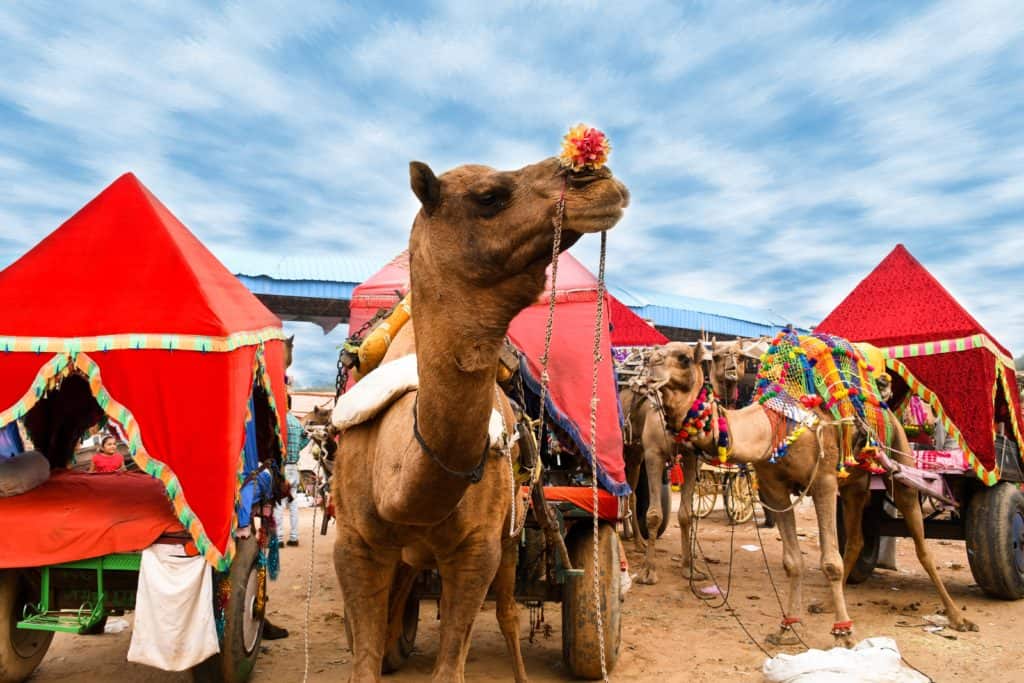
Pushkar
If it is just camels you want in all their big-lipped-hump-backed glory, head to the famous camel fair at Pushkar, 90 miles south west of Jaipur. This is an annual five-day festival to coincide with the full moon in November where camels are elaborately clad in their finest flower garlands, bells and macramé, to appeal to camel buyers from far afield. The festival has recently diversified to attract a wider audience so expect to see acrobats, jugglers, tightrope walkers and other nomadic performers, as well as a neon clad Ferris wheel.
Finally, onto gastronomy, every Rajasthani’s favourite topic of conversation. The cuisine here is like no other part of India, born out of a scarcity of water and vegetables, a royal heritage, and long-distance hunting expeditions, dishes are rich and wholesome, with long ‘eat by’ dates that require no heating. Dairy products substitute water in the form of milk, butter and butter milk while beans, lentils, legumes and gram flour form the basis of each dish. No trip to Rajasthan is complete without sampling Dal-Baati-Churma; spicy dal accompanied by the flaky deep fried, heavily spiced round bread baati with the sweet addition of churma, ground wheat mixture cooked in sugar and ghee.
Wherever the hot winds of this vibrant desert state carry you, you are guaranteed to return home enlivened, inspired and enriched. Word of caution: one trip to Rajasthan merely whets the appetite for more.
- Compare
- Sale!
- Best of Southern India
-
£849.00£0.00 - View Trip
- Compare
- Sale!
- Delhi to Kathmandu Adventure
-
£1,049.00£892.00 - View Trip
- Compare
- Sale!
- Discover India
-
£1,999.00£0.00 - View Trip
- Compare
- Sale!
- Discover India-Delhi to Kochi
-
£1,399.00£1,189.00 - View Trip
